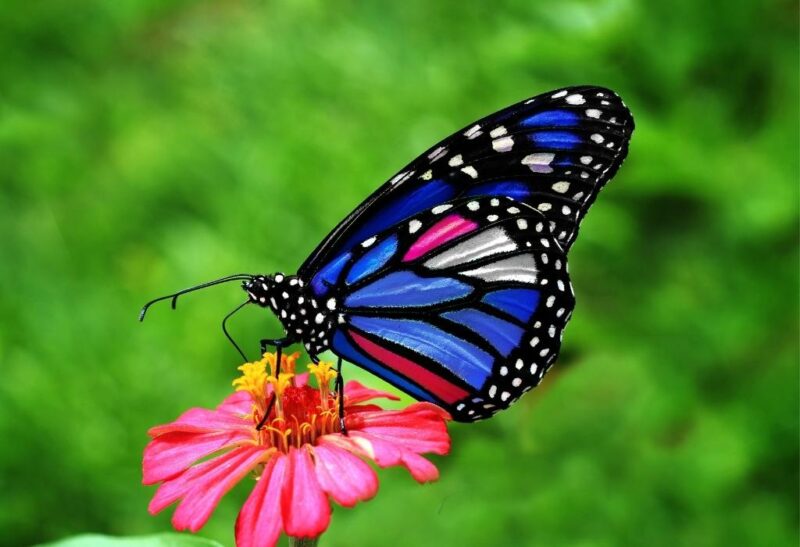There’s just something so captivating about butterflies. Aside from their colorful wings, their carefree nature can easily draw you to sit back and just enjoy watching them fly from flower to flower.
Butterflies live for around 30 to 50 days. This includes an average of 4 to 10 days in the egg stage, 10 to 20 days in the caterpillar stage, 6 to 12 days in the pupa stage, and 13 to 20 days in the adult stage. However, this depends on the species, with some surviving beyond 200 days.
If you want to know more about butterflies, you came to the right place. Where do they live? How do they protect themselves against enemies? Are they related to moths? These are just some of the questions answered in this article.
Table of Contents
How Many Days Can a Butterfly Live?
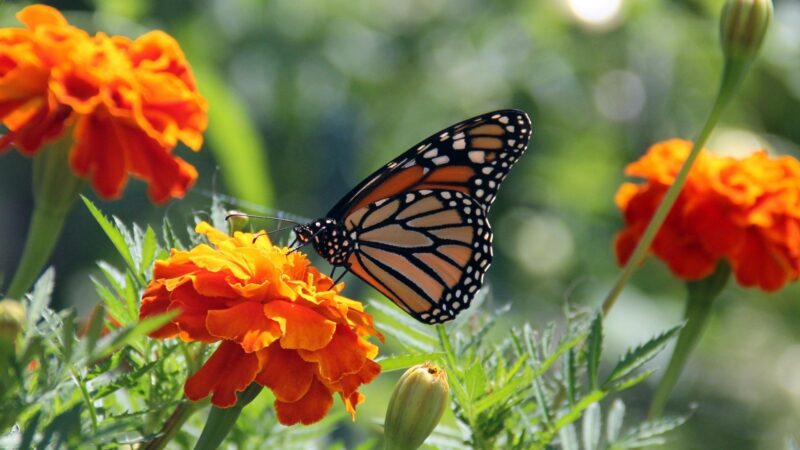
On average, the entire life cycle of a butterfly spans between 30 to 50 days. This includes the days it spends as an egg, a larva, a pupa, and an adult.
The egg stage of a butterfly lasts between 4 to 10 days. The female butterfly will lay these eggs on leaves which will then be consumed by the larva.
Once the eggs hatch, the butterfly enters its larva stage. This is otherwise known as the caterpillar stage. During this stage, the caterpillar spends its days eating – even the shell that it has emerged from. It does so because it needs enough protein storage for when it enters the pupa stage.
On its last day as a caterpillar, the larva will hang itself upside down and make its cocoon. This is when it enters the pupa stage. This lasts for around 6 to 12 days when the big transformation from caterpillar to butterfly takes place.
After the pupa stage, the adult butterfly emerges from the cocoon. On average, an adult butterfly lives between 13 to 21 days. This is except for the adult Monarch Butterfly that lives for up to 180 days.
Where Do Butterflies Live?
Butterflies are found all over the world. This is except for Antarctica since butterflies cannot withstand its freezing temperatures. But generally, butterflies prefer warm places, including the tropics and grasslands – with some like the Sagebrush Checkerspot and the Desert Black Swallowtail even thriving in deserts.
Do Butterflies Live in Trees?
Butterflies can live in trees. They can live anywhere as long as it’s warm, such as in trees, shrubs, other vegetation, as well as rocks. It has also been observed that butterflies prefer to sleep on twigs and branches where they can easily camouflage as leaves.
Some butterfly cocoons are also observed to hang on hidden branches of some trees. Butterfly eggs and larvae are also seen on the leaves of some trees. And in some instances, adult butterflies hide between barks of trees when they need rest or need a warm shelter in case of cold or rainy weather.
Thus, butterflies do live in trees – and at different stages of their lives.
What Eats a Butterfly?
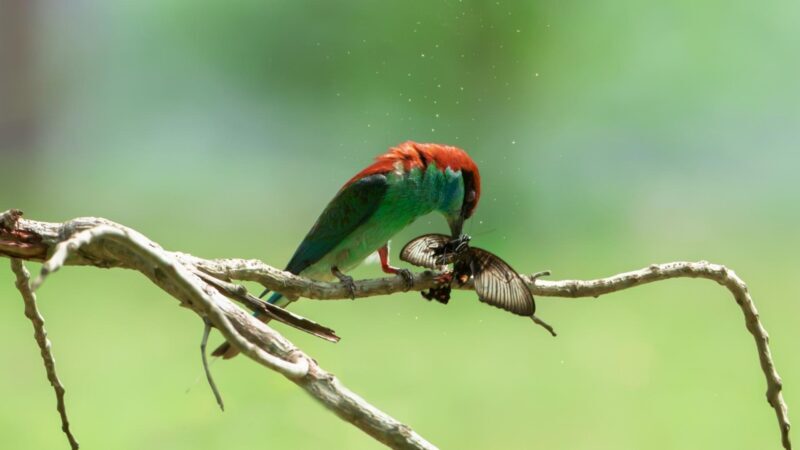
Butterflies are low-level members of the food chain, which means they are often preyed upon. Among its notable predators include birds, lizards, mice, spiders, and other similar animals.
How Does a Butterfly Protect Itself From Predators?
Butterflies are smart enough to use defense mechanisms like camouflage, mimicking, flight, and poison to keep themselves safe from predators.
- Camouflage. A majority of butterflies have wing patterns and colors that allow them to blend with their environment. This includes brown wing colors that make them look like dead leaves or interesting patterns that appear like tree bark.
- Mimicking. Other butterfly species have large spots on their wings that appear like large eyes. This can intimidate their predators that an apex predator is nearby.
- Flight. Surprisingly, butterflies are fast flyers, with some going as fast as 30 miles per hour. Even the slower ones can fly up to 5 miles per hour, coupled with flying patterns that help them escape their predators.
- Poison. Some butterfly species are poisonous. When they are eaten, the poison can cause the predators to become sick and can even lead to vomiting. But, while the eaten butterfly dies in the process, it helps protect butterflies of the same subspecies, which serves as a warning for predators not to eat the same butterfly again.
Do Butterflies Scare Predators?
Some butterflies can scare predators away because of their mimicking defense mechanism. This is a defense mechanism resorted to by butterflies with large spots on their wings that look like eyes when they spread their wings. This can intimidate their predators into thinking that an even bigger predator is nearby.
When Do Butterflies Die?
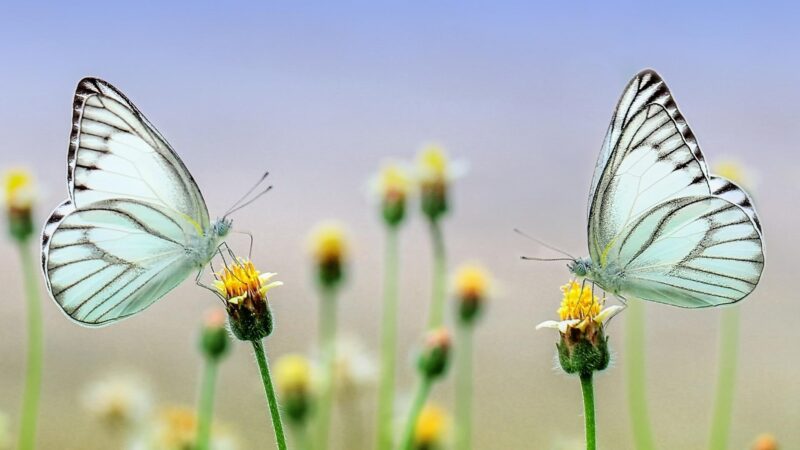
Butterflies die for a variety of reasons, but most of them die due to old age. As previously established, an adult butterfly lives for only around 20 days – save for the adult Monarch butterfly that can live for up to 180 days. After this period, they die a natural death.
However, there are also instances when butterflies die because they have been attacked by predators. Also, butterflies can die when the temperature is too cold – since they cannot regulate their body heat. Dropping temperatures can cause them to freeze and die eventually.
Where Do Butterflies Go to Die?
Like most dying animals, butterflies go into hiding when they are about to die. A dying butterfly is often too weak to defend itself from its enemies, so it prefers to hide in a place where it can pass peacefully. Some butterflies hide under fallen leaves, while others hide inside tree bark or under shrubs.
How Do Butterflies Die?
When butterflies die, they usually start losing their strength to move about with life. In old age, butterflies simply take a rest and pass on peacefully. In the case of cold weather, butterflies become too cold to move and die eventually.
How Do You Know If Butterflies Are Dead?
You will know when a butterfly is dead because it’s often motionless on the ground. But to be sure, try to give its legs a nudge. If it moves, then it’s likely just resting. But if it doesn’t move, you’re sure that it’s dead.
What Happens When a Butterfly Dies?
When a butterfly dies, it simply stops moving. Their bodies then become quite brittle and would fall apart at the slightest touch. Thus, you should handle it with care if you’re planning to preserve the butterfly’s body.
The butterfly’s body will start to relax within 2 days to a week, depending on its size. From then on, it will be easy to start the preparations for its preservation. During the waiting time, experts advise putting it in a sealed container and keeping it in the freezer until the butterfly body starts to relax.
Why Do Butterflies Die When You Touch Them?
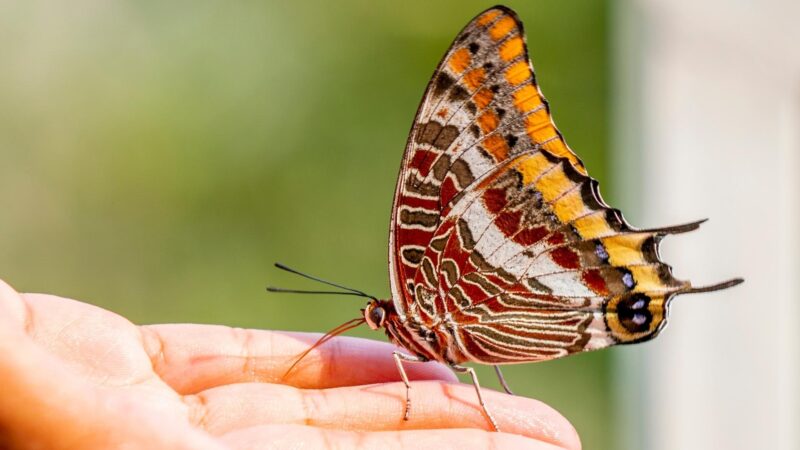
Contrary to popular belief, butterflies do not die right after you touch them. However, touching them by their wings can cause some of the scales on them to fall off. That makes it difficult for them to fly. When they cannot fly, they may not be able to forage, which can eventually lead to their death.
Do Butterflies Play Dead?
Some butterfly subspecies play dead. The Mourning Cloak butterfly is among the butterfly species known to play dead. It has been observed that this butterfly drops to the ground when it senses that a predator is nearby. Once it’s on the ground, it blends with the surrounding fallen leaves. As a result, the predator ignores them and looks for other prey.
Do Butterflies Hibernate?

Butterflies are known to hibernate. While it’s not like insects to hibernate, butterflies do go through long periods of sleep to last through the cold temperatures of winter. This is why you will find butterflies tucked behind curtains or shutters, or inside hollow trees to keep themselves warm as they sleep.
Can Butterflies Survive in Winter?
Generally, butterflies cannot survive cold temperatures since they cannot regulate their body heat. However, those who are lucky enough to find warm spots to rest and hibernate can survive the winter.
What Happens to a Butterfly in the Winter?
During the cold wintertime, butterflies either hibernate or migrate. By hibernating, they spend the winter season in a warm place and sleep throughout its duration. This is what most butterflies do.
Interestingly, a small group of butterflies migrates to warmer places during the winter. An example of a butterfly that migrates is the Monarch Butterfly, which flies to warmer areas to live out the rest of the winter season.
Should I Put a Butterfly Outside?
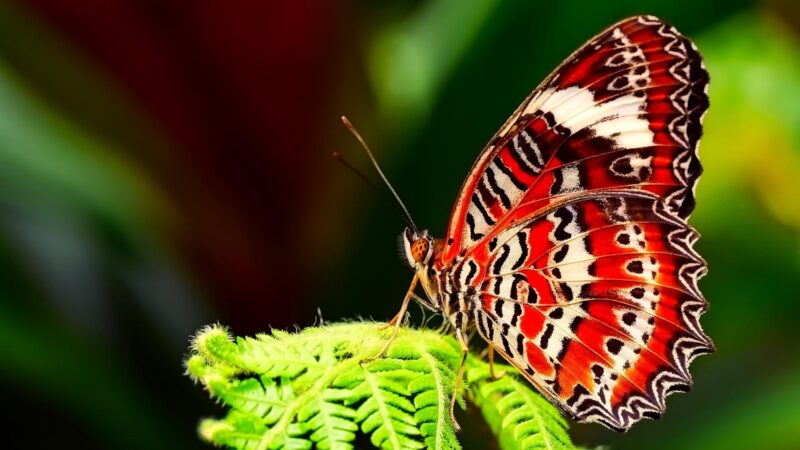
It varies whether you place a butterfly outside. If you happen to see a butterfly inside your house during the winter, there’s a chance that it’s hibernating and has chosen the warmth of your home to survive through the season.
In this case, it’s best to capture the butterfly inside a box and allow it to settle in a dry place within your home. This can be your garage or any area where the butterfly won’t be easily disturbed. Give it time to settle and start its hibernation. It will awaken from its sleep once the temperature starts to rise, and that’s the time you can safely put it outside.
On warmer days, it’s best to let a butterfly exit your home to make sure it has enough food to eat. You can do so by opening windows or by gently capturing it in a box and releasing it outside.
In any case, make sure that you don’t touch its wings. Doing so will remove the scales on its wings, making it difficult or impossible to fly. And as a result, the butterfly may die soon after.
Are Moths Related to Butterflies?
Moths are related to butterflies. Both the moth and the butterfly belong to the Lepidoptera insect order, which is characterized by the presence of wings, scale-covered bodies, and an elongated appendage from the head called the proboscis.
Another shared trait between insects of the Lepidoptera order is their capacity to undergo a complete metamorphosis. Both the butterfly and the moth change their forms completely from their larva or caterpillar state. And that’s truly fascinating.
What Is the Lifespan of Moths?
On average, a moth lives for around 30 to 60 days. This includes around 3 days in its egg stage, 10-18 days as a larva, 4 days as a pupa, and 13 days as an adult. Nevertheless, some moth species are known to live up to seven years. For example, the common house moth can live for up to 5 months, while the arctic wooly bear moth can survive for up to 7 years in cold environments.
A majority of butterfly species live relatively short lives of up to 50 days. This includes its 4 stages, from an egg to an adult winged insect. Nevertheless, there’s no denying that these species are among the most fascinating out there – especially with their impressive transformation and survival skills. No doubt, butterflies are one-of-a-kind.
List of Sources
Butterfly Life Cycle. Michigan State University.
All About Butterflies. University of Kentucky College of Agriculture, Food, and Environment.
Fei, Y. H., Yang, J. T. (2015). Enhanced thrust and speed revealed in the forward flight of a butterfly with transient body translation. Physical review. E, Statistical, nonlinear, and soft matter physics.
Johansson, L. C., Henningsson, P. (2021). Butterflies fly using efficient propulsive clap mechanism owing to flexible wings. Journal of the Royal Society, Interface.
